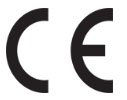NEW AGE PRODUCTS
BEST MDF BOARD
Medium Density Fibreboard (MDF) is the recent advancement in interior woodwork. It is engineered wood which is created by first breaking natural wood. Hard or softwood is reduced to its fibres. This process is achieved with the use of a defibrillator. The wood fibres are then combined with wax and resin binder to form panels. The constituents of MDF are generally 82% wood fibre, 9% urea-formaldehyde based resin glue, 8% water, and 1% wax. The mold is subjected to high temperature and pressure to form MDF panels. The final product is stronger than standard plywood and denser than particleboard.
Medium Density Fibreboard (MDF) is the recent advancement in interior woodwork. It is engineered wood which is created by first breaking natural wood. Hard or softwood is reduced to its fibres. This process is achieved with the use of a defibrillator. The wood fibres are then combined with wax and resin binder to form panels. The constituents of MDF are generally 82% wood fibre, 9% urea-formaldehyde based resin glue, 8% water, and 1% wax. The mold is subjected to high temperature and pressure to form MDF panels. The final product is stronger than standard plywood and denser than particleboard.
Physical Properties
HMR MDF is sold at a lower price than regular natural wood but has much to offer when it comes to strength. MDF is created by deconstructing wood and adding additives to make it durable. Therefore, it is free of defects that may along with natural wood like knots and cracks. MDF doesn’t warp under varying conditions and has even distribution in its properties all along. Other than resin, binding agents like lignin provide better durability. MDF also provides longevity as it doesn’t lose its form over time.
Moisture Resistance
MDF is mixed with additives like wax and resin. These substances guarantee protection from moisture damage which natural wood is known for over a prolonged time. This has made MDF a great fit for areas like the kitchen and bathroom.
Thermal and Acoustic Insulation
Other than domestic households MDF has applications in commercial space. For thermal insulation, MDF boards are an efficient and cheap solution. Due to insulation the heat /cold loss inside the room is reduced and helps you save money on your electricity bill. A 12mm MDF board can provide thermal insulation equivalent to a 150mm brick wall. Due to the porous, yet durable structure, MDF boards are a great fit for acoustic insulations in recording studios.
Ecological Compatibility
Commercial and domestic areas must be ecologically sound. MDF is a great fit for ecologically compatible areas. They have lesser formaldehyde emissions when compared to particle boards which make them less toxic and more environmentally friendly. They are a perfect fit for kitchens and nurseries or kids’ rooms.
Price
Budget is an important factor to be kept in mind when it comes to construction. MDF is known to be 60-70% cheaper than natural wood, making them cost-efficient.
Fire Resistance
Other than being thermal and acoustic insulated, medium density fibreboards are also fire resistant. Commercial buildings, stores, and offices alike, prefer their interiors to be built with MDF for added safety. This also helps them meet building safety requirements implemented by their national law. Homeowners have also taken a liking to this property and have their garage or other rooms constructed with MDF for better safety.
Vapour Repulsion
Medium Density Fibreboards are best suited for regions that are known for humidity. Natural wood is known for morphing and molding in humid areas. Other than damage to property, it also invited bacteria and fungus. MDF is suited for such areas and act as a vapour barrier for home and commercial spaces. The material can fight moisture damage and dry out over long periods. This helps avoid damage due to rotting and warping.
Sound Proofing
The most common use of medium density fibreboard’s soundproofing can be seen in recording studios, theatres, and auditoriums. Speaker manufacturers use MDF in their speakers as they reduce vibration noise. Less commonly known, but construction companies use medium density fibreboards to reduce the noise created by their heavy tools.
Roofing
The best exterior application of medium density fibreboard is in roofing. Its water-resistant property makes it the perfect fit to use for backing when setting shingles or a low sloped roof.

Selected Hardwood Species

Preservative Treated

Pre-Pressed

Mark of Quality

Lifetime Warranty on Premium Offering

Healthy, Safe & Environment Friendly

E-O Emisssoin

Boiling Water Proof

Borer Proof & Ternide Resistant










